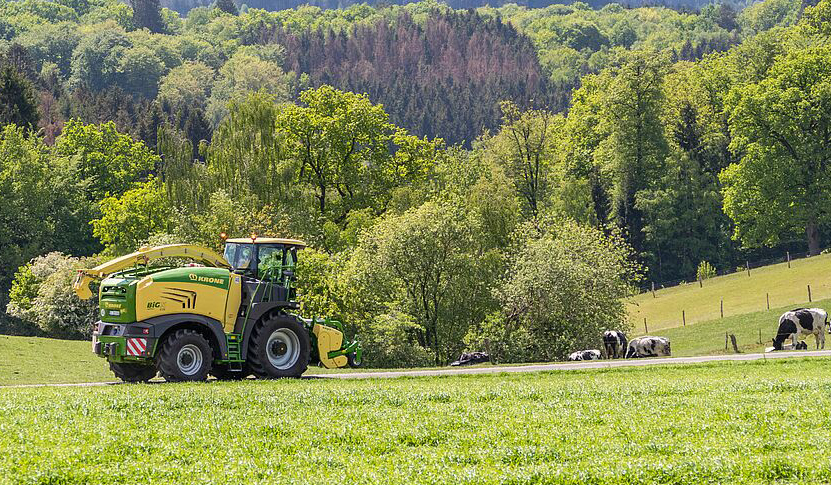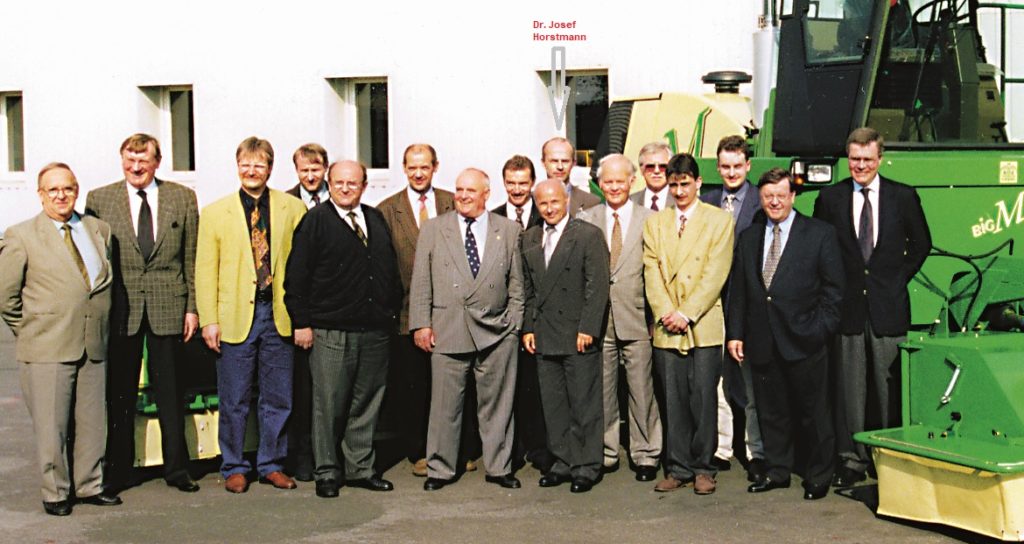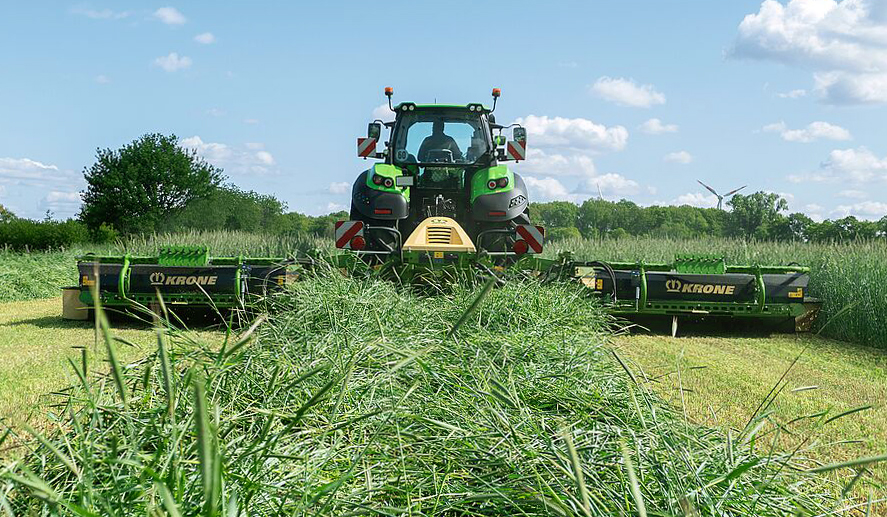Krone has come a long way over the years and now stands as a leading manufacturer of grass-harvesting equipment.
In an exclusive interview with Agriland, the head of the company’s engineering and development, Dr. Josef Horstmann, outlined the progress he has overseen in his time with the company.
Dr. Horstmann joined the company in 1983 and was put to work straight away on mowers, he later moved to tedders and rakes before becoming responsible for all development in 1998.

This was shortly after the introduction of the Big M self-propelled mower, which he had overseen.
The impetus came from the then CEO, Dr. Horstmann recalled, who believed that Krone needed the machine if it was to become ‘full line’ in the grass-machinery market.
Ireland ideal for Krone
The company had long viewed Ireland as the ideal environment to test mowers as we have heavy crops, wet grass, stony ground and hilly fields.
“Ireland is very special in that it has the most difficult conditions for harvesting grass. A machine that works in Ireland will work in the rest of the world and we are still developing machines in Ireland for that reason,” he said.
Not only has it been tested in Ireland but it also sells particularly well here too.
This is due to its manoeuverability and capacity to cope with all the adverse conditions found on Irish farms, he said.

As to the future of the machine, the concept will remain unchanged while it still gains power. Pointing to the trend in self-propelled harvesters he noted:
“In California, farmers tell me they would buy a model with 2,000hp, but there is no engine that powerful we can use. I see these big fields in California and the only thing they need is horsepower.
“However, there lies the suggestion that the quest for ever larger self-propelled machines has left a gap in the market, which Krone might be looking to fill with “something smaller in the future”.

Dr. Horstmann is set to retire in July with a further 12 months acting as a consultant.
He leaves a department that is fully committed to keeping the company ahead in technology, both mechanical and digital.
The big question
One big question that hangs over the future of farm machinery is: how will it be powered?
The self-propelled machines produced by Krone demand a lot of power and he sees no alternative to the diesel engine at present.
The company has been involved with many engine manufacturers and universities in assessing various other power sources.
But it appears that the only conclusion so far reached is that “batteries are not for us, we need the power of a diesel”, adding that “it will be with us for at least another 20 years, there is nothing else in the pipeline”.

What he does see as developing rapidly is what he terms the “farm infrastructure”.
By this, he means, the average size of the farm and the approach of those running them.
Over the course of his career with Krone, he has seen farms merge and amalgamate as older farmers pass away and land is sold on or otherwise consolidated by the family. One example he cites is that of Australia where the average farm size has expanded to 4,000ha from just 80ha 25 years ago.
This figure he finds truly amazing, along with the fact that the most powerful tractors available in Germany were 180hp when he started, but the average is now 240hp.

Rather than dwell on the need for bigger machines and the demands that ever-more power has placed on machinery design, he points to the people running these large enterprises.
“The remaining farmers are very professional, and professional farmers have different needs. It has changed very fast and is still changing fast.”
One of these needs manifests itself as a demand for more digitalisation. Krone started to investigate and invest in machine-based information technology around 15 years ago and quickly appreciated that they were not big enough to to develop systems on their own.
This realisation has led the company to get fully behind the Isobus protocol and, by extension, Agrirouter and the AEF (Agricultural Industry Electronics Foundation).
All three would appear to be noble causes yet he indicates that behind the scenes politics within, and between, manufacturers have delayed their progress.

This has not deterred Krone, which has, obviously, applied some thought to appointing Dr. Horstmann’s successor.
The role is to be divided between Jan Horstmann (no relation) and Sebastian Hassig, both of whom have risen up through the engineering department’s ranks.
It is a move that would appear to signify the company’s vision of the future for Jan is an electronics and IT specialist rather than a man of nuts and bolts – that is Sebastian’s area of expertise.
Yet it is the former who will become the overall manager, piloting Krone’s machinery development from now on.

Agriland would like to take this opportunity to wish Dr. Josef Horstmann a long and happy retirement.
